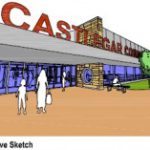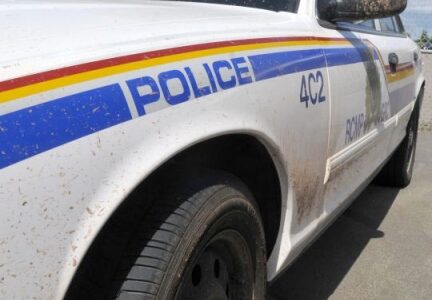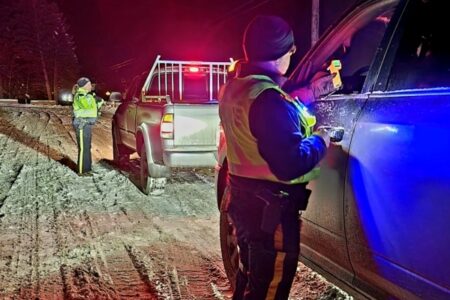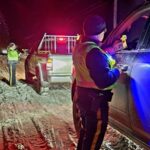Highway Three to be studied. Local Mayors see expansion of highway as key to economic growth.
Highway three. It’s the east-west road in and out of the Kootenays and the southern route from the lower mainland to Alberta. It both brings traffic to our area as well as takes traffic away from our area. As the primary transportation link to the southern portion of the province it is in many ways the bringer of people and wealth to the communities that lie upon its provincial traverse. Just how important is that link to the economic well being of Southern BC? What economic and social impacts does the highway have and how would those potentially be improved through the expansion of the highway? Those are two of many questions to be asked and solved as the Ministry of Transportation and Infrastructure embarks on an economic assessment of Highway 3.
Long lobbied for and desired by communities along its route, Highway 3 may be in the early stages of a major upgrade and perhaps a more a prosperous generation for the cities and regions it serves. Started by the Highway 3 Mayor’s Coalition and coming together at last year’s UBCM (Union of British Columbia Municipalities) meeting in September the lobbying effort for a full economic assessment study of Highway three shifted into high gear.
The various mayors on the coalition met with then premier Gordon Campbell and Minister Bond directly to plead their case for the study. Working together as one cohesive group, pushing one common project with goals agreed to by all included, the coalition made a strong case and caught the ear of the province. This April the study is expected to get underway with a completion date of September 2011, just in time to present the results at next year’s UBCM meeting.
“Our wishes have been granted,” commented Lawrence Chernoff, Castlegar Mayor and co-chair of the Highway 3 Mayors Coalition. “The key factor here was that we haven’t divided ourselves and we have that “United we will conquer,” thing going on. That’s what we’re doing on this project. We see it moving ahead together and we see the provincial government spending a fair amount of money on Highway Three as things roll along.”
The primary question being asked in the study is “If the highway was expanded, would it result in economic growth that would benefit the region and the province as a whole?” Some of the factors being looked at would it drive:
- Net Increases in employment
- Positive Impact on private sector Investment
- Positive impact on productivity
- Positive Impact on Gross Domestic Product and tax revenues
- Positive impact on trade
Delving deeper, the results of those potential gains will be looked at in terms of whether they represent a province-wide increase in economic activity or whether it simply shifts economic activity from one part of the province to another.
The outputs of the study will be used to make business cases for potential highway improvements along the route.
In addition to quantifying economic impacts of the current constraints on the Highway 3 corridor the study will also identify and assess potential goods, resources and people movements within the corridor if constraints were removed or mitigated as well as quantifying the economic impacts of those changes.
With confidence high among the Highway 3 Mayor’s coalition that improvements will spur economic growth a preliminary list of prioritized recommended improvements has also been submitted to the province and include:
- Sunday Pass Whipsaw Curve Realignment
- Laidlaw Road to Manning Park East Gate Realignment
- Cranbrook to Alberta – Sparwood Passing Lane WB Passing Lane
- Cranbrook to Alberta -Olsen Crosslng 4-Lane -complete 4-Lane passing lane
- Cranbrook to Alberta- Galloway – 4-Lane Passing Lane
- Cranbrook to Alberta- Wardner Passing Lane EB Passing Lane
- Creston Truck Route Alternative (Cook Street) Truck Route Bypass
- Cranbrook to Fernie – Elko Chicane Reaalignment
The shining example the Mayor’s coalition looked to in modeling the potential success was a similar study done by the province on the Okanagan transportation corridor which resulted in improvements to the Okanagan connector among other projects, significantly boosting economic growth in that region.
“You look at what the Okanagan Connector has done to the communities up there,” added Chernoff. “Everyone talks about time and that’s what we’re looking at. Be it truckers or otherwise I think you’d see a lot more traffic if you took an hour off that trip from say Rossland to Vancouver, you’d be using it a whole lot more often if that was the case. That’s the kind of ideas we’re looking at. How to shorten the route up and make it better for truckers and general public. We want truck traffic but we also want to see tourists come down and see the Kootenays and say “Here’s a scenic opportunity on Highway Three.”I think you’re going to attract more businesses and such because more people are travelling down the route.”
Mayor Granstrom of Rossland supports the efforts and firmly believes making it easier for folks to get here is one piece of the economic growth picture.
“For me it’s simple really. Most of our visitors come here by car. If we can make that easier, I’d expect more people to make the trip, stop, shop and who knows maybe move to this area.”
Chernoff and the Mayor’s coalition see this study as a vital first step to what could be hundreds of millions of dollars flowing into the region for highway upgrades over the next 15-20 years.
“If you look at a 20 year plan and you spend 30 million a year you can probably imagine $600 million being spent on that highway. We figure we have the scenic route far better than Highway One but we don’t want to piss off people on Highway One. We think it’s a nicer and better route to travel in all conditions in all seasons and with some major improvements can and should rival Highway One as the preferred choice for travelling across the province.”
Of course every road that leads in, also leads out. One major question to be asked is “Will making the highway from Hope to Alberta faster bring more people to the area or simply help those travelling through get through quicker?”
If an when upgrades are made to the highway , the next challenge for those cities and towns along the routes will be how to get the increased and faster traffic to stop, take in the beauty of the Kootenays, spend money and or potentially set up shop along the route.
“That’s going to be our challenge as the mayors of these communities,” explained Chernoff. “Once we’ve improved the road, how do we attract people to stop? What were’ looking for in the long term is that people travel into the Kootenays on Highway Three and stop and you stay for a while. We want people to stop whether that’s in Sparwood, Castlegar, Rossland or whatever.”
In the meantime one highway project has been announced for the Kootenay/Boundary region for this summer. The continuation of last year’s paving on the Paulson Summit will extend the project out to Sheep Creek and is expected to get underway in the coming weeks.
Until a new form of transportation is brought into our route or the air service is upgraded, Highway Three will continue to be the main source of traffic in and out of the region and the Mayor’s coalition hope’s that translation of more traffic equals more economic activity.
“It’s good for everyone but it’s mostly about boosting economic growth and how will this help us down the road,” added Chernoff. “We need that help because things are little slow here and after the recession this might be one way to “drive,” if I can say that, more business to the area.”
What are your thoughts on expanding Highway Three? Will an improved highway drive our economy or simply drive more cars past us?
























Comments